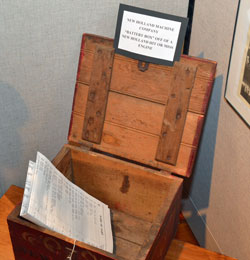 The U.S. Department of Agriculture (USDA) and Microsoft are partnering to explore how climate change will impact the United States’ food system with the intent of achieving better food resiliency. This USDA news release says the “Innovation Challenge” is a contest designed to challenge entrants to develop and publish new applications and tools that can analyze multiple sources of information about the nation’s food supply, including key USDA data sets that are now hosted on Microsoft Azure, Microsoft’s cloud-computing platform.
The U.S. Department of Agriculture (USDA) and Microsoft are partnering to explore how climate change will impact the United States’ food system with the intent of achieving better food resiliency. This USDA news release says the “Innovation Challenge” is a contest designed to challenge entrants to develop and publish new applications and tools that can analyze multiple sources of information about the nation’s food supply, including key USDA data sets that are now hosted on Microsoft Azure, Microsoft’s cloud-computing platform.
“For more than 100 years, USDA has compiled data from economic reports and farm production surveys, and more recently from satellite imagery and remote sensors that can provide information on the health of crops around the country,” said Agriculture Secretary Tom Vilsack. “Through this partnership with Microsoft, we are now putting that data into the hands of people who can help us derive new insights to address factors that threaten our ability to feed a growing global population. This offers very exciting possibilities, and I look forward to seeing the new tools that contest participants develop.”
For the first time, key USDA datasets are being made available in the cloud where they can be accessed and blended with other data to give novel insights or used in new types of end-user applications. Combining these USDA data with cloud-computing resources allows even very high fidelity and complex models to be processed in a timely manner and enables results to be delivered to remote users on their laptops, tablets or mobile phones.
The challenge offers $60,000 in prizes, including a top prize of $25,000, for applications that make use of the USDA data and provide actionable insights to farmers, agriculture businesses, scientists or consumers. In addition, Microsoft is granting cloud-computing awards to aid university researchers and students who wish to take part in the challenge. The deadline for entries is November 20, 2015, giving challenge participants three months to create their applications. Winners will be announced in December 2015.
More details on the program are available here.








